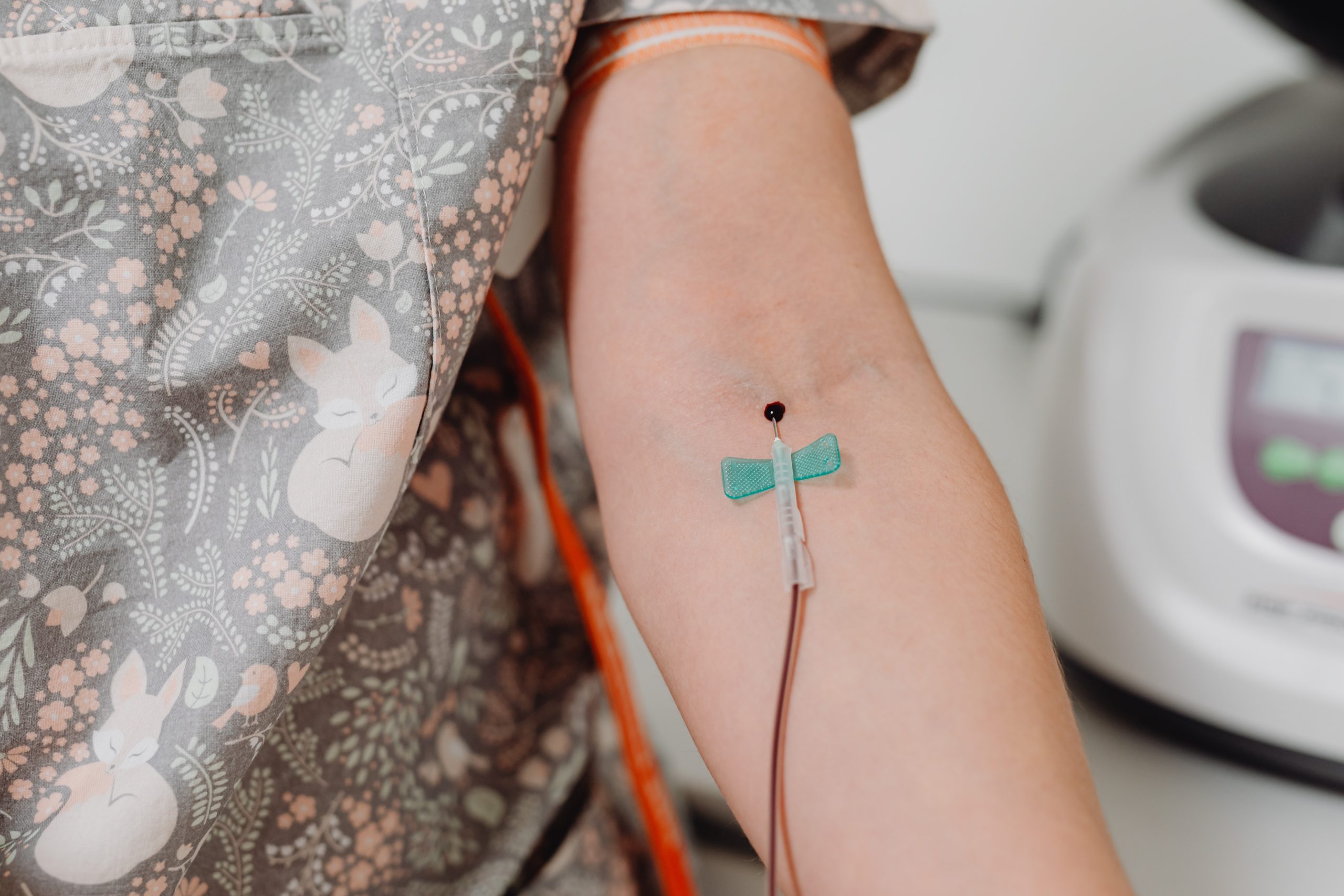

The U.S. is still in the middle of a major blood donation shortage. The number of blood donations has declined 10% since the start of the pandemic, according to the Red Cross. Clinics have had to scale back the amount of blood product they send to hospitals in need, which can put patients at risk.
Donating blood is largely seen as a charitable act, but new research shows that regular blood donations actually benefit the donor as well. A new study published in JAMA Network shows that donating blood can help rid the bloodstream of “forever chemicals,” including perfluoroalkyl and polyfluoroalkyl substances (PFAS), which don’t degrade in nature.
A Win-Win Situation
Researchers from Macquarie University in Australia looked at 285 firefighters with the country’s Fire Rescue Victoria service. Two-thirds of the participants regularly donated blood and plasma over the course of 12 months.
They chose to focus on firefighters because they tend to have higher levels of PFAS in their blood compared to the general population. First responders routinely get exposed to these chemicals via firefighting foam.
“The results from the study show both regular blood or plasma donations resulted in a significant reduction in blood PFAS levels, compared to the control group,” said hematologist Robin Gasiorowski, lead author of the study. “While both interventions are effective at reducing PFAS levels, plasma donations were more effective and corresponded to a 30 percent decrease.”
PFAS are also found in a range of industrial and consumer products, including:
You can get infected with PFAS by drinking contaminated water or food, eating fish that have been contained with forever chemicals, or by accidentally swallowing dust or soil.
Exposure can lead to birth defects and preeclampsia in pregnant women, increased risk of kidney and testicular cancer, obesity, changes in liver enzymes, increased cholesterol levels, and decreased vaccine response in children.
This marks the first time PFAS levels decreased in the bloodstream. These chemicals are notoriously hard to get rid of because they don’t break down naturally with time.
During the study, 95 firefighters gave blood every 12 weeks, 95 firefighters gave plasma every 6 weeks, and 95 firefighters didn’t make any blood or plasma donations. PFAS levels remained constant in the control group, but they went down in the groups that regularly donated blood and plasma.
PFAS bind to serum proteins in the blood, and the study suggests that simply getting rid of these proteins can help reduce PFAS levels overall.
However, more research is needed to see if donating blood can help other types of people remove PFAS from their system.
“While this study did not examine health effects of PFAS or the clinical benefits of its reduction in firefighters, these important questions are worthy of further research to better understand health outcomes from exposure and treatment,” said environmental scientist Mark Taylor, from Macquarie University.
The bad news is that escaping PFAS has become virtually impossible. They have become omnipresent in the environment and have even been found in some of the most remote regions on the planet.
The researchers plan on expanding the study to a wider group of patients while measuring the health effects of PFAS to see if donating blood can make a difference. Individuals with a higher risk of becoming infected with forever chemicals stand to benefit the most, but we all have to live with PFAS whether we like it or not.
“Firefighters often put the health and safety of others before their own health, so it is pleasing that the results from this research can be used to improve the health of firefighters who have acquired high PFAS levels through vital community work,” said Mick Tisbury, Assistant Chief Fire Officer at Fire Rescue Victoria.
“It’s important to also recognize the firefighters who volunteered their time to participate in this important study. The findings will not only benefit the firefighting community but others working in high-risk sectors who are exposed to PFAS chemicals.”
We all stand to benefit from donating blood. Who knew such a selfless act could help reduce the risk of illness and disease?
When we discuss students, we always mention their qualities. Those qualities show what they are…
If you or someone you know is juggling mental health issues alongside substance abuse, understanding…
For the last couple of weeks, the Israel-Hamas conflict has taken over the news cycle.…
Our eyes are invaluable, serving as our windows to the world. The ability to see…
Undoubtedly, one of the most demanding and challenging professions is nursing. Nurses work long hours in…
Echocardiography, or echo for short, is a key diagnostic test used by cardiologists to assess…